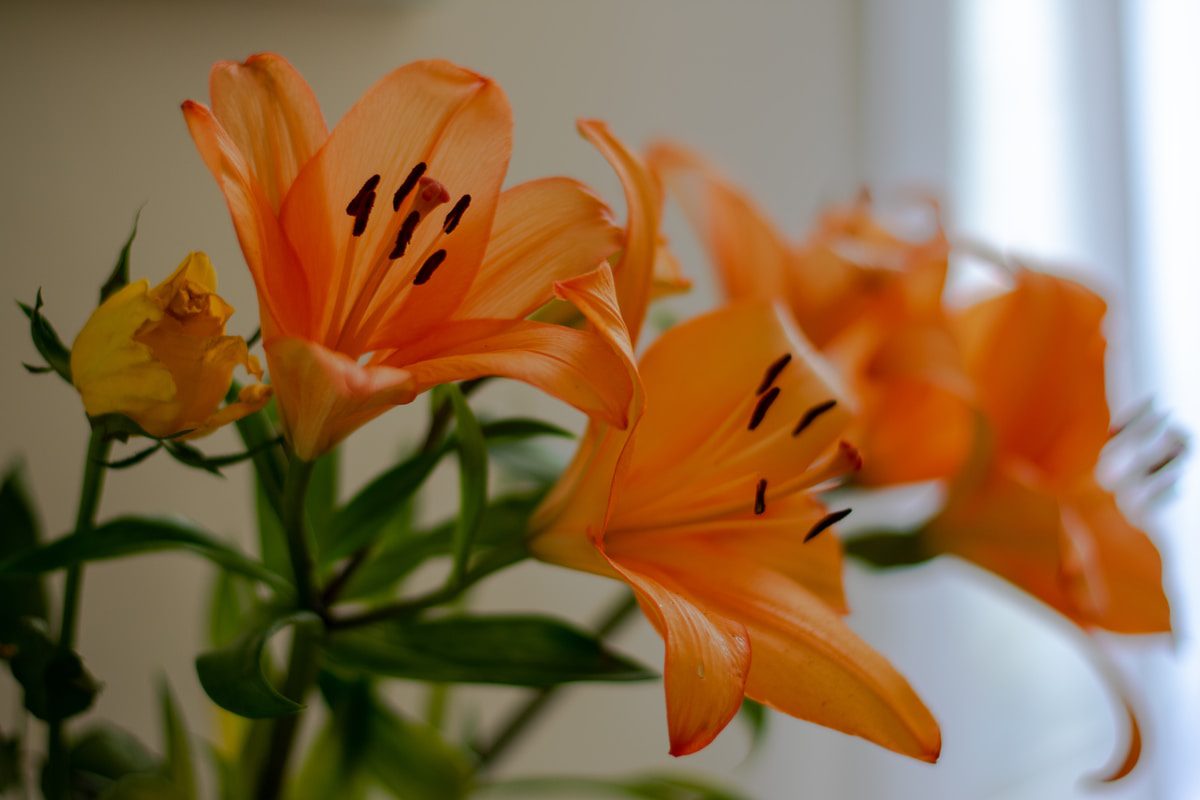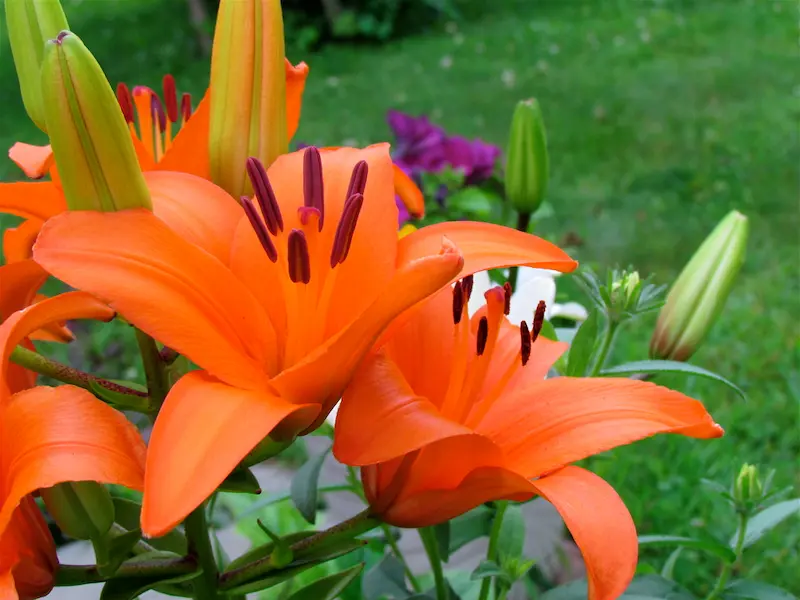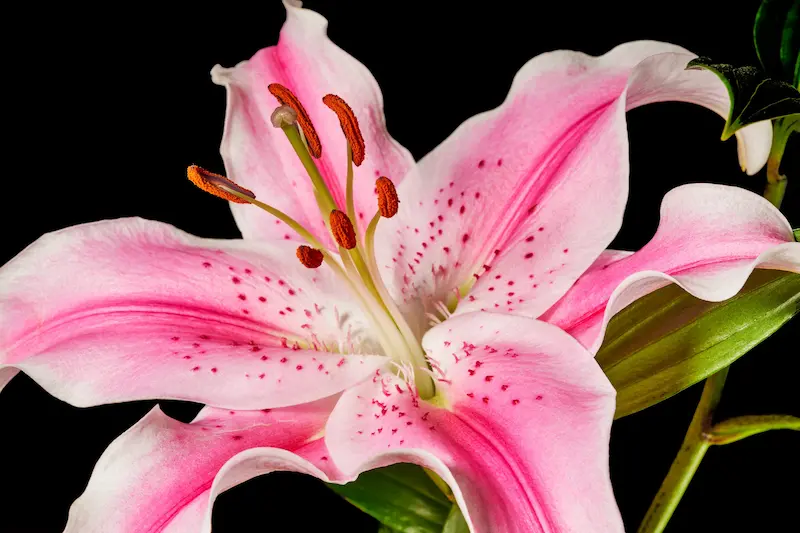Asiatic Lily Care: How To Grow Asiatic Lilies

The Asiatic lily (Lilium asiatica) is an excellent choice for landscape design. This real lily, when planted appropriately, produces long-lasting blossoms and is one of the hardiest and most popular lilies cultivated. Asiatic lilies are the easiest of all lilies to experiment with for beginners who are new to bulb gardening.
They are the first lilies of the season to bloom, and they reproduce quickly. With proper care, they thrive in hardiness zones 3 – 10.
Check out other summer blooming flower ideas.
Video – Asiatic Lily Care
Deep History Of Asiatic Lily Flowers From Ancient Egypt To China
The history of the Asiatic lilies runs deep. Painted flowers of the Asiatic lily were found adorning the walls of ancient Egyptian pyramids. Chinese paintings with the lily found their way into the power circle of Louis XIV.
What is the Difference between Asiatic Lily and Oriental Lily?
The oriental lily shares a number of features with the Asiatic hybrid lily. However, they also possess distinct differences and no one should see them as the same. A few of their dissimilarities include fragrance, sizes, and bloom color.
Characteristics of Asiatic Lily Bulbs?

Flowers are usually small to medium-sized, up to 5 or 6 inches in diameter. Bulb colour plays no part in flower colour. Flower colour is orange or pinkish hue and uniform, sometimes with contrasting tepal tips and/or throat. Spots are absent, or when present, well-defined and often rounded. Conspicuous brushmarks are sometimes present. Tepal margins are usually smooth or slightly ruffled. Flowers usually have little or no scent.
The large bulbs store a lot of food, giving them plenty of flower power in the spring, even with sub-par soil, water, and fertilizer.
Characteristics of Oriental Lilies

Flowers range in size from modest to very enormous. Inner tepals are frequently quite wide and overlap at the base, resulting in a “closed” centre. Flower colours range from white to pink to purplish red, with hints of golden yellow; the ground colour is frequently white, with a contrasting centre ray. Spots range from non-existent to many, covering up to half of each tepal. Papillae and nectaries are frequently seen. Flowers are frequently fragrant. Late-flowering varieties are common. (Source: CBA Page 64)
Planting and Growing Asiatic Lilies
The Asiatic lily is the hardiest of all lily hybrids. They bloom fast and multiply swiftly each season, making them perfect for beginners. This hybrid lily comes in a wide range of colours, including red, pink, yellow, orange, and white, as well as all other shades of bloom and colour combinations except blue. Plants have a long bloom season (up to a month), with blossoms generally facing upward, and on warm windless days, some have a very light aroma.
How To Plant Bulbs
Plant Asiatic lily bulbs in early spring or fall before frost in a well-drained, fertile soil. This allows the plants to develop a good root system. Adding organic matter will help improve the soil.
When planting bulbs, place them 12 to 18 inches apart and 4 to 6 inches deep in full or partial sun.
Plant in a location with at least six hours of direct sunlight in the morning or late afternoon. Asian lilies prefer slightly acidic soil (6.5 pH). Asiatic bulbs should be planted as soon as possible to avoid drying out. When three or more lily bulbs are planted together, they will multiply into clusters for a more appealing look. Plant them amongst other flowers to provide shade for the bulbs. A bulb planter may be used to dig a hole to the right depth.
Tips For Watering
The best Asiatic lily care will have bubs planted with good drainage, but not a dry soil. Asiatics need 1 or 2 inches of water per week. During hot and dry weather, the lilies may need supplemental watering to ensure the root zone stays well moistened. (A soaker hose is a great option.) The soil should remain moist and not soggy.
As a guide, water the lilies when the top 1 inch of soil below the surface becomes dry will provide the plant with the needed moisture for them to thrive.
How To Fertilize
Generally, these lilies do not require frequent fertilizing.
Nonetheless, a light ring of 5-10-10 fertilizer placed into the ground around the lilies offers the nutrients essential for Asiatic lilies to grow. This fertilizer provides phosphorus and other nutrients required for big, healthy flowers. Each spring, apply fertilizer after the lilies begin to develop, following the application rate guidelines on the fertilizer package.
Propagating
Propagate lilies from stem bublets, bulb scales, stem bulbils and bulb division. The fastest way comes from splitting plump bulbs. Pull them apart and plant them separately.
When And How To Deadhead
Do not prune the foliage, however, until it dies off naturally during the fall. In the fall, deadheading the blooms as soon as the petals drop improves their appearance but also prevents the plant from using up its energy for seed development. The leaves work gathering energy from the sun to store in the bulbs for next season’s bloom.
How To Care For Asiatic Bulbs After Blooming – Mulching and Winter Care
Once the foliage dies back naturally, cut the dead foliage to the ground.
- Add a layer of 4 -6 inches of mulch – straw or leaf mold – to provide the bulbs with protection during winter. This helps maintain soil temperature and prevents heaving.
- Remove the mulch during spring after all the danger of frost passes. This will give room for new growth to appear.
- A 2-inch layer of bark mulch applied after removing the winter mulch helps to preserve soil moisture and prevent weeds.
Pests And Diseases
Asiatic lilies find themselves susceptible to fungal infections and aphids. Here’s a detailed article on getting rid of aphids organically.
Asiatic Uses In The Home And Garden
The stems of Asiatic lilies make nice cut flowers for use in floral arrangements. Blooms last for several days up to several weeks. Grow in a mix of perennial garden borders alongside other woody shrubs and flowering perennials. They also make wonderful potted specimens.
Lilium Toxicity to Cats
Although humans eat the bulbs of true lilies, cats are easily poisoned by the plants. As few as two leaves or part of a flower have resulted in death. Toxicity is generally attributed to a water-soluble toxin producing renal failure. Symptoms include salivation, vomiting, anorexia, and depression. The toxin acts rapidly, and treatment needs to be administered quickly. (Source: CBA page 65)
Summary
A home gardener’s “dream lily” might be the Asiatic lily plant. Give them excellent, rich soil, plenty of sunlight, water on occasion, and a little fertiliser, and they’ll take care of the rest. Most kinds bloom in late May or June, when the bulbs produce an abundance of 3 to 12 flowers in a variety of hues. Don’t forget to experiment with “other” Asiatic lily variations, such as white and orange Asiatic lilies. All of them are simple to grow and provide gardens with a plethora of bright blooms to admire.
You can have fun experimenting with other Asiatic lily varieties, such as white and orange Asiatic lilies. If you have a garden pond in your backyard, you can also experiment with a few water lily pads. They are all easy to cultivate and offer gardens with a multitude of colourful flowers to enjoy.

